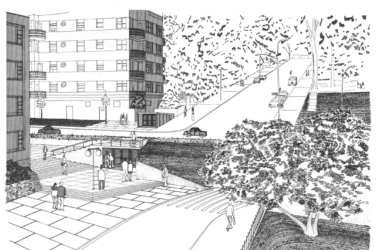The removal of BIXI bikes every November can only mean one thing: Winter is coming. For some, this spells the end of biking season, but many Montrealers continue to bike even during the long, cold months. In fact, the number of winter cyclists in Montreal rose by 14 per cent in 2017, according to Vélo-Québec.
Among them is Tommy O’Neill Sanger, U3 Science and volunteer at The Flat Bike Collective. He is not deterred by the harsh conditions of the winter months.
“I [bike to school] everyday,” O’Neill Sanger said. “It’s quite common, a lot of my friends do [it, too]. There are definitely less people [biking] on the road in the winter, but every year, I’m seeing more and more people.”
In order to prepare their bikes for the winter, many cyclists switch to snow tires. Studded tires, a type of snow tire with metal studs embedded in the treads, provide good traction on icy roads, but are also heavier, which makes for a slower ride. According to Vélo Québec, a common tip for slippery roads is to let a bit of air out of the tires for better grip, but to not go below the minimum pressure recommended by the specific manufacturer. Moreover, salt on roads can cause friction for bikes and can wear out the chains. But, as O’Neill Sanger assured, as long as bikes are cleaned frequently, once or twice a week, salt corrosion should not be too much of a problem.
“In the winter, […] I put tires on that have more tread [than my normal tires…] [but they are not] specifically meant for snow,” O’Neill Sanger said. “Although some good winter tires have metal in them, [some, like mine, don’t]. [Bike parts], such as derailleurs or brakes, [can freeze] in the winter. One of the solutions is to have a single-speed or fix-gear bike so [there is no derailleur and] it’s a lot simpler and [requires] less maintenance.”
A common issue in the winter is that many of Montreal’s bike lanes lack a physical divider between bikes and vehicles, which, when combined with ice patches or thick snow, can create dangerous conditions for cyclists.
“The main thing is to be aware of the conditions [on the road],” O’Neill Sanger said. “You have to watch out for patches of ice or thick snow. Roads get thinner because snow doesn’t get cleared perfectly, and you bike more towards the middle of the road, which can be dangerous.”
O’Neill Sanger suggests planning your journey beforehand to stay safe on the roads. Some cyclists prefer to switch to smaller roads where there are fewer cars, but often these roads are not plowed as well. However, he believes that Montreal’s bike infrastructure has seen improvement in recent years, allowing for safer cycling in the winter.
“We’ve seen a lot of progress in recent years in the maintenance of biking routes,” O’Neill Sanger said. “Often, [some] bike paths are the first to get cleared. Sometimes you find a bunch of pedestrians on the bike paths just because the sidewalks aren’t cleared. [But] there is [definitely] still room for improvement, and it’s not perfect.”
Still, O’ Neill Sanger maintains that the fear behind winter biking is definitely unfounded.
“It’s definitely good to do some research to figure out how to [bike] safely, but I definitely recommend it to [all cyclers], even beginners,” O’Neill Sanger said, “Most days throughout the winter, the streets are clear and quite safe [.…] For the most part, you can often ride on the same bike [as you would] ride in the summer.”









